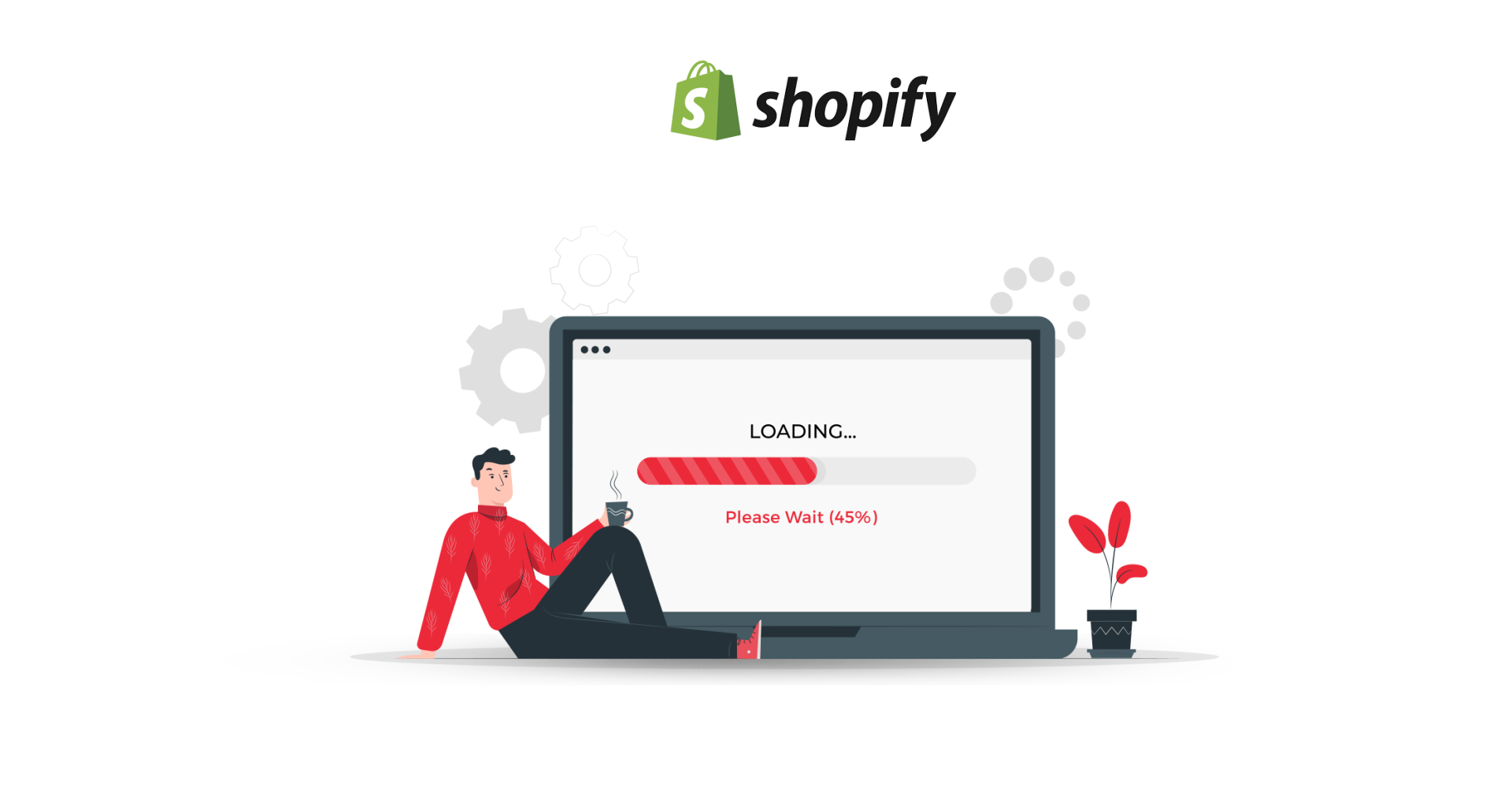If you run a store on Shopify, making your website faster is like giving it a superpower. Imagine this: every second your site takes to load, if it gets reduced, can earn you more money. Recent revelations unfold that a mere one-second enhancement in site speed can metamorphose into a staggering, huge dollar surge in revenue. That’s the dynamic force of optimization! That’s the kind of magic we’re talking about!
Now, let’s explain it. When your site is fast, it’s not just good for your visitors but also for getting your store higher up on Google searches. So, if you want more people to find your shop, speed is your secret weapon.
What speed optimization does Shopify have already?
Shopify is a great online store platform. It comes with some built-in speed features that make your store fast and smooth for customers.
Automatic Browser Magic:
- Shopify does a cool trick called browser caching. It stores pictures and styles in your customer’s web browser when they first visit your store.
- So, when they return, the browser already has these things saved. It’s like having a speedy shortcut, making your store load faster.
Worldwide Speed Boost:
Shopify is buddies with Fastly CDN (Content Delivery Network). It’s like a helper that spreads your store’s stuff worldwide on different servers. This means when someone far away visits your store, they don’t have to wait long. CDN brings your store closer to them quickly, making it super quick to show them what they want.
With these built-in speed-ups, Shopify turns your online store into a quick and efficient place for people to shop. So, whether it’s storing magic in browsers or zipping things around the world, Shopify’s got your back to make your store a fast and delightful experience for everyone.
How do you optimize the Shopify Store’s loading speed?
Making your Shopify website faster is like creating a smooth and quick experience for people. A fast website makes users happy and helps your site show up better on search engines.
Let’s explore some simple ways to make your Shopify site speedy:
Pick a Simple Shopify Theme
Choosing a fast Shopify theme is the first step. Some themes have extra stuff that can slow down your site. Pick a simple theme to make sure your site is off to a good start. We tested over 200 themes and found some good ones:
- Create Theme (1.1 FCP, 7.8 TTI)
- Toy Theme (1.1 FCP, 7.7 TTI)
- Warm Theme (1.9 FCP, 7.8 TTI)
- Light Theme (1.1 FCP, 7.8 TTI)
- Outdoors Theme (1.1 FCP, 8.1 TTI)
These are good if speed is important for you
Make Images Smaller
Big pictures can make your Shopify site slow. Resize and make them smaller to keep things looking good and loading fast. You can use tools like Crush.pics or Optimizilla to squeeze the images down and speed up your site.
Use Still Pictures Instead of Moving Ones
Moving pictures, called GIFs, can be cool, but they are often big and slow. Consider using still pictures instead to keep your site moving quickly without losing the fun.
Show Pictures When People See Them
Lazy loading is a trick to make pictures show up only when people scroll down the page. This makes your site start faster. Shopify has easy instructions on how to do this, and using a tool like lazy sizes can help.
Make Pictures Lighter
If your pictures are lighter, your site will be fast. Use tools like Crushpics or Optimizilla to squash your pictures and make them smaller without losing quality.
Use Less Extra Stuff
Apps and extra things on your site might slow it down. Regularly check and ask:
- Do we use this a lot?
- Do we really need it?
- Is there a lighter option?
- Is it worth making the site a bit slower for this?
- Do people actually use this a lot?
If not, consider taking them out to keep your site running fast.
Move Tracking Codes Easily
Google Tag Manager helps you add or remove codes without going into the complicated stuff. Move tracking pixels like Google Analytics, Hotjar, and Facebook to Google Tag Manager to keep things loading smoothly.
Check Your Site with Google PageSpeed Insights
Google PageSpeed Insights is like a speed test for your site. It tells you how fast your site is and how to make it better. Look at the First Contentful Paint and Time To Interactive to see how quickly your site shows up for users. Keep testing to make sure your site stays fast.
AMP: Turbocharging Your Shopify Site for Swift Mobile Experiences
Making your Shopify site faster is about choosing a simple theme, using smaller images, and keeping things light. Regular checks and simple adjustments will help your site stay speedy and provide a great experience for your visitors.
Boosting your Shopify site for smooth mobile experiences involves diving into the world of Accelerated Mobile Pages (AMP). AMP is a powerful tool that makes web pages load fast on phones and tablets.
Since more than half of shoppers buy things using their phones, making your website responsive to mobiles is important. AMP is the secret sauce to ensure your website loads quickly on these devices.
In Shopify, you can easily use helpful apps like FireAMP or RocketAmp. These apps have great ratings and make your website load faster on mobiles. They’re like magic tools that simplify the process.
Making AMP versions of your landing pages is a smart move to keep up with mobile users. A guide on “How to build pages with AMP” shows you the steps to add AMP to your Shopify site.
Summary – Enhancing your Shopify store’s speed involves strategic adjustments like image optimization, reducing requests, and embracing lazy loading. These optimizations are key to a faster-loading site, ensuring a smoother user experience across all digital channels. If you aim to boost your Shopify store’s overall performance and enhance SEO, explore O+ Shopify SEO services for comprehensive solutions. Streamlining your site with this pioneer digital marketing agency improves its speed and elevates user satisfaction, making it a win-win for both functionality and search engine visibility.











